Should You Lie Down for an Indian Head Massage? Tips & Benefits
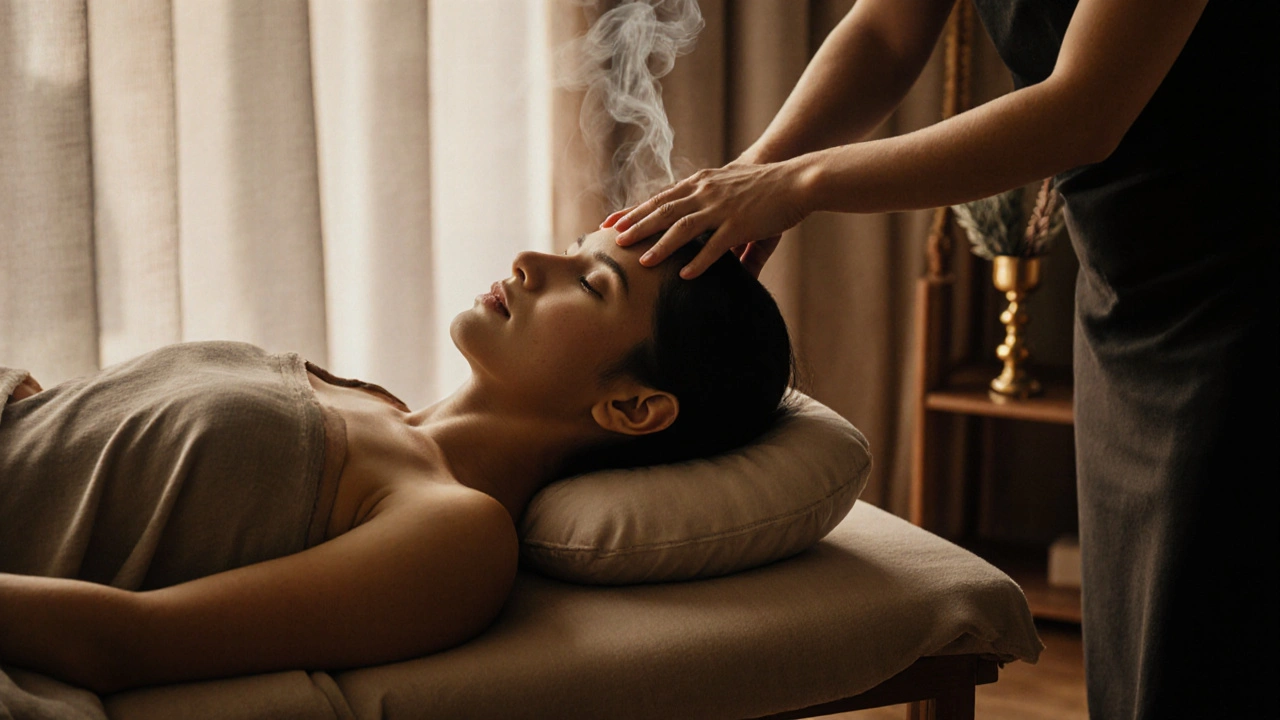
When you walk into a studio and hear the words Indian head massage, the first image that pops into most people’s heads is a client comfortably reclined while a therapist works on the scalp. But is that the only-or even the best-way to enjoy this ancient practice? Let’s unpack the posture debate, the science behind each position, and how to decide what works for you.
What Exactly Is an Indian Head Massage?
Indian head massage is a traditional Ayurvedic technique that focuses on the head, neck, and shoulders, using rhythmic strokes, gentle pulls, and pressure points to promote relaxation and balance. Originating in India over a thousand years ago, it draws on the concept of chakras-energy centers along the spine-especially the crown and third‑eye points. Practitioners claim it can ease headaches, improve circulation, and even boost mood by stimulating the parasympathetic nervous system.
Traditional Posture: Sitting versus Lying Down
Historically, the massage was performed while the recipient sat on a low stool, legs crossed, and the therapist stood behind. In modern salons, many therapists ask clients to lie on a massage table, often with a small pillow under the head. Both setups have their own set of advantages.
Pros of Lying Down
- Full‑body relaxation: When you’re horizontal, the spine is supported, allowing muscles to release tension more easily.
- Therapist control: A reclined position lets the therapist use both hands simultaneously, reaching the neck and upper back without straining.
- Consistent pressure: Gravity helps maintain an even pressure, which is useful for gentle, sustained strokes that characterize the Indian head massage.
Research from the University of Melbourne’s Centre for Pain Research (2023) showed that participants who received head massage while lying down reported a 30 % greater reduction in perceived stress compared to those seated.
Pros of Sitting
- Greater alertness: Remaining upright can keep you more awake, which some clients prefer when the goal is a quick energy boost.
- Access to the scalp: Sitting allows the therapist to use the full range of motion of the forearms, especially for deep‑tingle points behind the ears.
- Space‑efficient: Smaller rooms and fewer pieces of equipment are needed; a simple floor cushion often suffices.
A 2022 survey of 500 Indian head massage practitioners in Sydney found that 62 % preferred the seated style for shorter sessions (15‑20 minutes) because it reduces set‑up time.
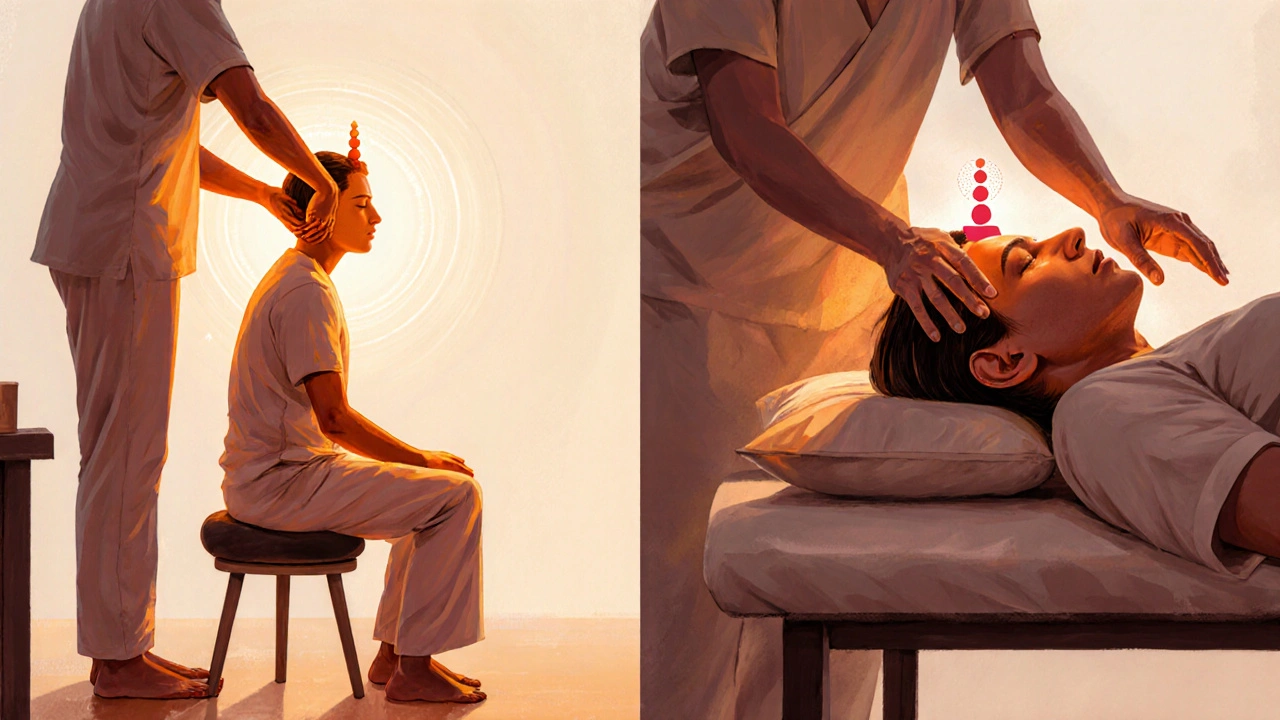
When to Choose Each Position
- Goal: Deep relaxation - Lie down if you’re looking for a meditative experience or want to combine the head massage with a brief body treatment.
- Goal: Quick refresh - Sit if you’re on a lunch break and need a 10‑minute boost without feeling drowsy afterward.
- Physical limitations - If you have back or hip issues, lying flat may be uncomfortable; a sturdy stool with back support can be a better fit.
- Therapist preference - Some therapists are trained primarily in the seated method and may deliver more precise pressure points in that posture.
Key Techniques that Work in Both Positions
Regardless of how you’re positioned, a good Indian head massage includes:
- Scalp kneading - circular motions that stimulate blood flow.
- Temple massage - gentle pressure that eases tension headaches.
- Neck stretches - slow pulling to release tight traps.
- Ear pulling - a classic Ayurvedic move that balances the fifth chakra.
These moves can be adapted whether you’re on a table or a chair, making the practice versatile.
Comparison Table: Lying Down vs. Sitting
| Aspect | Lying Down | Sitting |
|---|---|---|
| Comfort level | High - spine fully supported | Moderate - depends on chair ergonomics |
| Therapist reach | Both hands free, easier neck work | Focused forearm use, better scalp access |
| Setup time | Longer - need table and linens | Short - cushion or stool only |
| Alertness after session | Potentially sleepy | Stays alert |
| Best for | Deep relaxation, combined body work | Quick refresh, office settings |
Common Misconceptions
1. “You must lie down for the massage to work.” No. The technique’s efficacy comes from pressure points and rhythmic strokes, not the client’s angle.
2. “Sitting is uncomfortable.” With the right stool and a small pillow behind the lower back, many clients find the seated position just as soothing.
3. “Lying down makes you overly relaxed.” Absolutely not. It can be a gentle wake‑up if the therapist incorporates stimulating taps at the crown chakra.
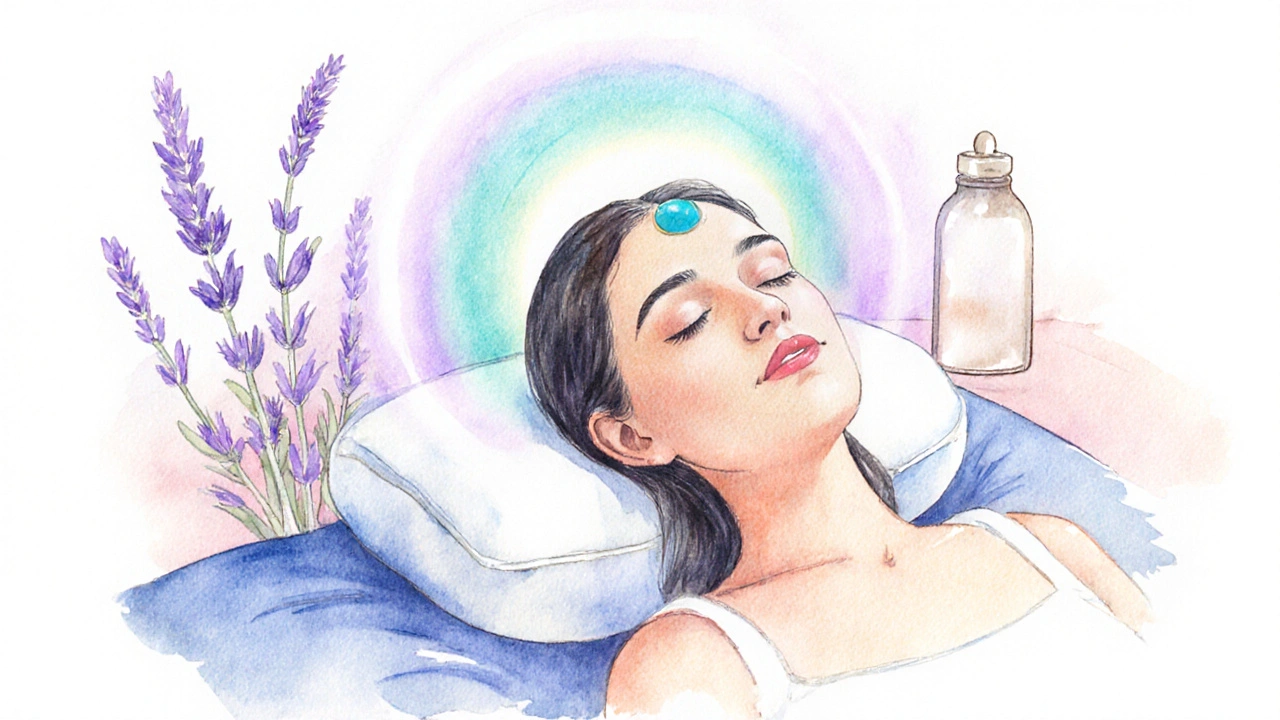
How to Communicate Your Preference
Before the session, let the therapist know what you’re hoping to achieve. A simple script works:
“I’m looking for a relaxing experience and don’t mind lying down, but I have a low back issue, so I’d prefer sitting if possible.”
Most licensed practitioners in Melbourne will adapt the setup on the spot.
Safety Tips
- If you have neck injuries, avoid deep stretches regardless of posture. \n
- Make sure the pillow or headrest supports the natural curve of the neck.
- Stay hydrated; massage can release toxins that need flushing.
- Inform the therapist of any scalp conditions (e.g., psoriasis) before the session starts.
Putting It All Together: Your Personal Checklist
- Identify your main goal: relaxation, energy boost, or pain relief.
- Consider any physical limitations (back, hips, neck).
- Choose a posture that aligns with your goal and comfort.
- Communicate clearly with the therapist about preferences and concerns.
- After the massage, note how you feel - refreshed, sleepy, or still tense - and adjust next time.
Following this short routine helps you get the maximum benefit from every Indian head massage, whether you’re flat on a table or perched on a stool.
Frequently Asked Questions
Can I do an Indian head massage at home while lying down?
Yes. Use a firm pillow, keep your neck supported, and follow gentle scalp‑kneading motions. A short 10‑minute session can still boost circulation.
Is there a health risk in lying flat if I have high blood pressure?
Generally no, but keep the head slightly elevated with a thin cushion to avoid sudden blood flow changes. Always check with your doctor if you’re unsure.
How long should a typical Indian head massage last?
Standard sessions run 30‑45 minutes. Shorter 15‑minute options are common for office‑based seated treatments.
Do I need to tip the therapist more if I choose a lying‑down session?
Tipping isn’t mandatory, but many clients give 10‑15 % of the fee for longer, full‑body sessions, whether they’re seated or reclined.
Can I combine Indian head massage with aromatherapy?
Absolutely. Essential oils like lavender or peppermint enhance relaxation and can be diffused gently during the treatment.
Whether you end up lying down or staying upright, the key is to enjoy the soothing rhythm, let go of tension, and leave feeling lighter. The next time you book an Indian head massage, experiment with both positions and see which one makes you feel your best.

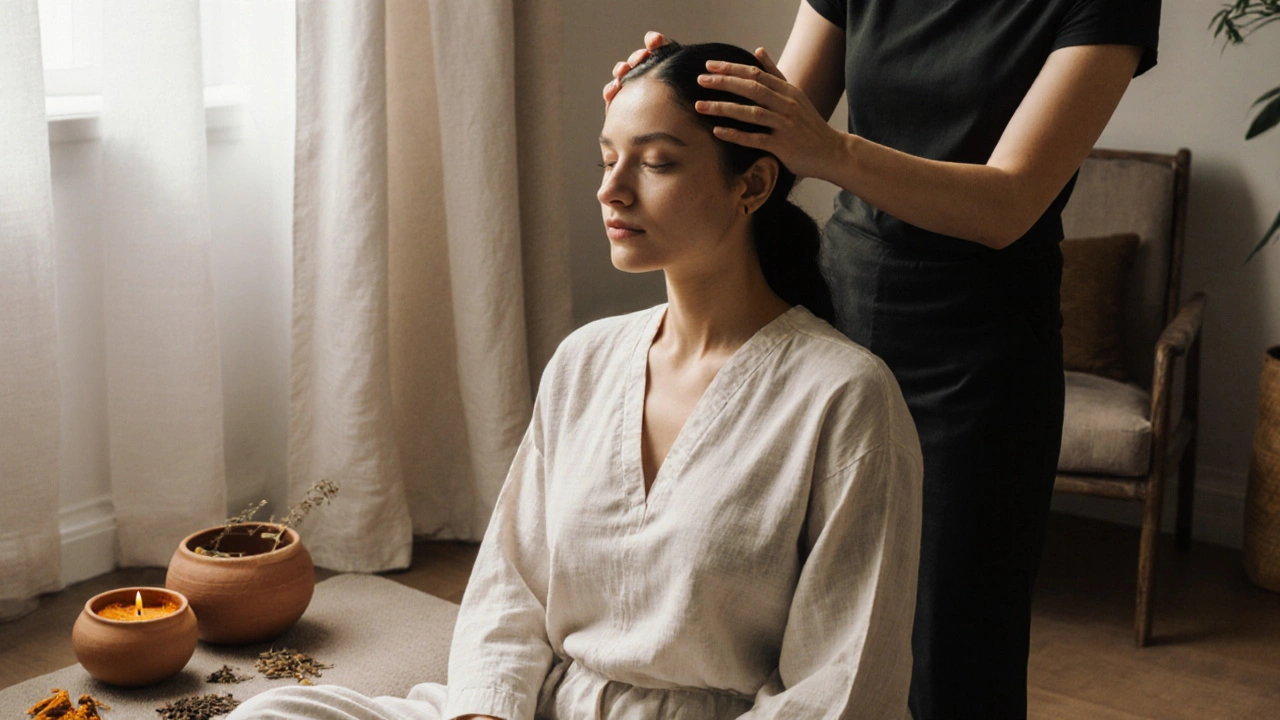
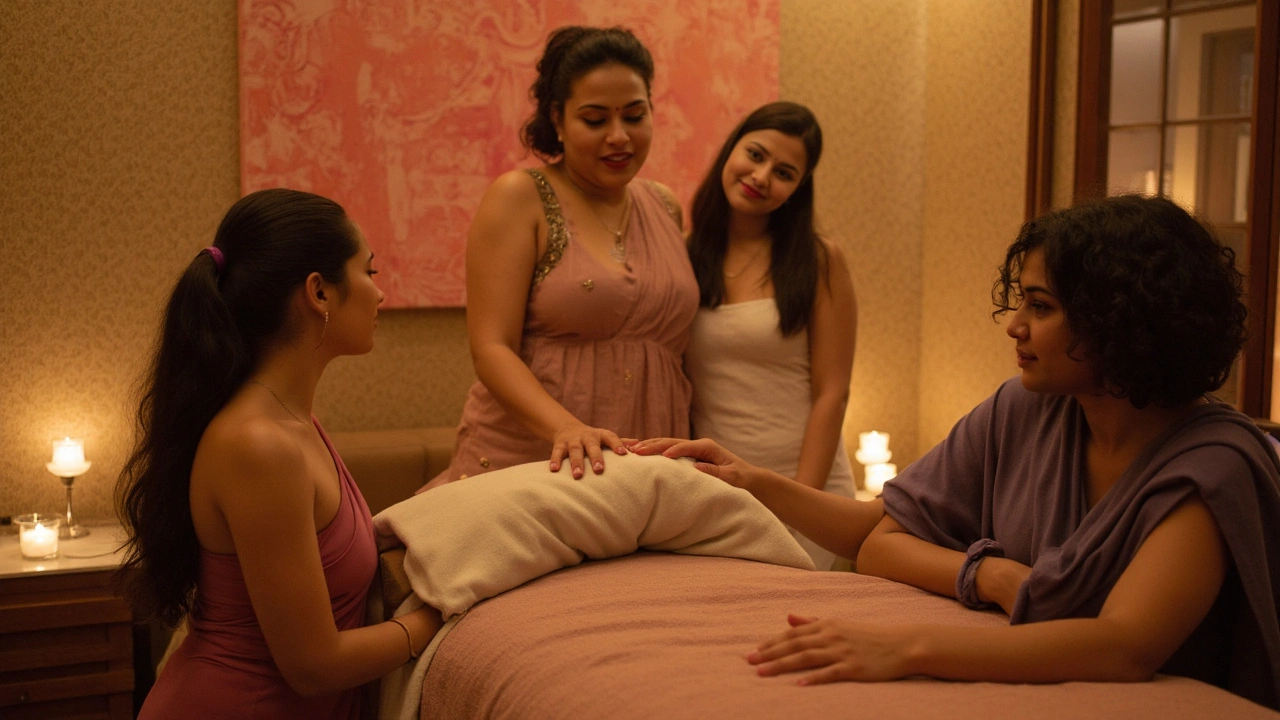
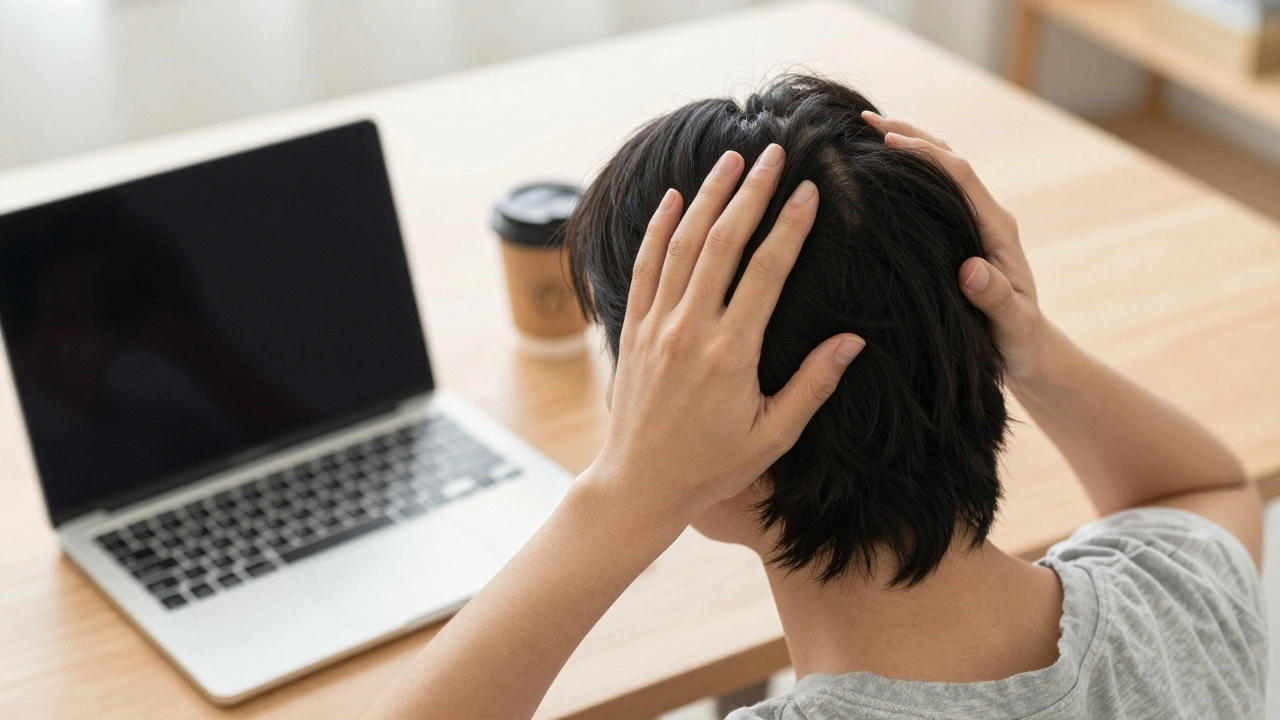
Asher Luptak
October 25, 2025 AT 14:57I've been thinking about the whole posture thing, and it seems the key is personal comfort, not a rigid rule; whether you’re lying flat or perched on a stool, the goal is relaxation, after all. The ancient texts talk about balance, and modern studies back that up, so it’s not just hype. If someone has a low back issue, a seated set‑up might actually protect them from strain. On the flip side, the horizontal position can let the nervous system unwind more deeply, which many clients swear by. Ultimately, communicate your needs clearly, and the therapist will adapt, even if it sounds like a definatly tricky choice.
Franklin onah
October 25, 2025 AT 15:46Truth be told, the science behind gravity‑assisted pressure isn’t some mystical secret-it's simply biomechanics; the body’s own weight helps distribute force evenly, which is why lying down often yields a 30 % stress drop, as the Melbourne study shows. But if you’re after a quick jolt of energy, the seated pose activates the sympathetic side, keeping you alert. So pick the posture that aligns with your intention, not just tradition.
Annah Hill
October 26, 2025 AT 13:00Honestly, most people just fall for the hype that “lying down equals deeper relaxation,” when in reality a good therapist can trigger the same response on a stool. The whole “you must be horizontal” narrative feels like marketing fluff, not fact. If you’re comfortable and alert, why waste time setting up a table? The seated method is quicker, efficient, and just as effective for most goals.
Lynn Ma
October 26, 2025 AT 14:00Look, I’m not here to police anyone’s choice, but I have to say: the “I‑need‑a‑cushion‑and‑a‑table” crowd is missing the point. The real magic comes from the therapist’s skill, not the furniture. Throw out the elitist‑sounding set‑up and focus on breathing, pressure, and intention. A simple floor cushion can be as powerful as a luxe massage table if the practitioner knows their chakras.
Kathy ROBLIN
October 27, 2025 AT 08:26Nothing beats the drama of a full‑body recline for ultimate bliss.
LeeAnne Brandt
October 27, 2025 AT 09:26I get the vibe that many folks enjoy the theatrical feel of lying down, but honestly, a quick seated session works just as well when you’re short on time. Grab a comfy pillow, keep your neck supported, and let the therapist do their thing-you’ll still walk out feeling refreshed :)
siva kumar
November 13, 2025 AT 03:13In my experience growing up in the heart of Kerala, Indian head massage has always been more than a mere spa treatment; it is a cultural ritual that ties together community, health, and spiritual practice. Historically, the seated position on a low stool was the norm because most households did not have dedicated massage tables, and the therapist could work while standing, using the full reach of their forearms. When colonial influences introduced western furniture, the horizontal layout entered many modern studios, promising deep relaxation through gravity‑assisted strokes. Both positions have their merits, and the science supports this duality: a 2023 Melbourne study demonstrated a 30 % greater stress reduction in the lying‑down group, yet a 2022 Sydney survey revealed that 62 % of practitioners prefer seated sessions for efficiency. The real deciding factor, however, is the client’s anatomical and psychological landscape. If a person suffers from lower back or hip discomfort, forcing a flat posture can aggravate pain, whereas a sturdy stool with a lumbar cushion can provide needed support. Conversely, for someone seeking a meditative escape or wishing to combine the head massage with gentle stretching of the shoulders, a reclined table allows the therapist to integrate neck rolls without disrupting balance. From an Ayurvedic perspective, the flow of prana is not confined to a single angle; the practitioner’s intention and the client’s breath are the true conduits of energy. Modern therapists often adapt by offering a hybrid approach: starting seated to awaken the senses and then transitioning to a supine position for deeper relaxation. It is also worth noting that the choice influences the post‑massage state-lying down may induce a slight drowsiness, which is ideal before a nap, while sitting tends to leave the client alert and ready to return to daily tasks. In practical terms, the setup time differs: a table requires linens, pillows, and sometimes additional staff, whereas a cushion or stool can be arranged in seconds, making it perfect for office settings or pop‑up wellness events. Ultimately, I encourage clients to view posture as a flexible tool rather than a strict rule, and to communicate openly with their therapist about any injuries, preferences, or desired outcomes. By doing so, the ancient wisdom of Indian head massage can be personalized to fit contemporary lifestyles, preserving its therapeutic essence while embracing modern convenience. So whether you lie down on a plush table or sit on a simple stool, the ultimate goal remains the same: to harmonize mind, body, and spirit. Remember, the most important ingredient is the therapist’s attentive touch, not the furniture.
satish gottikere shivaraju
November 13, 2025 AT 04:13Great points! I love how you highlighted flexibility-no matter the set‑up, the focus stays on relaxation and joy. Keep spreading the love :)